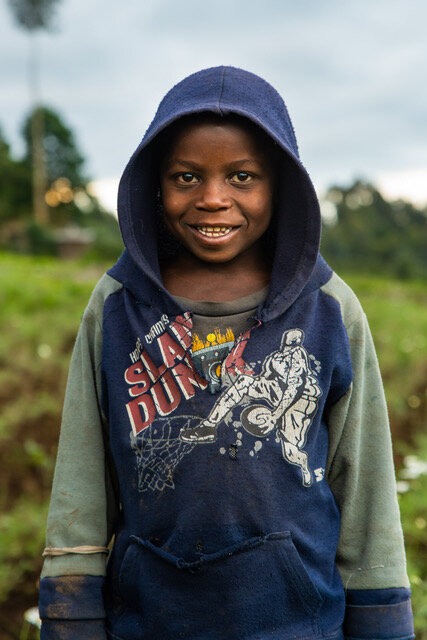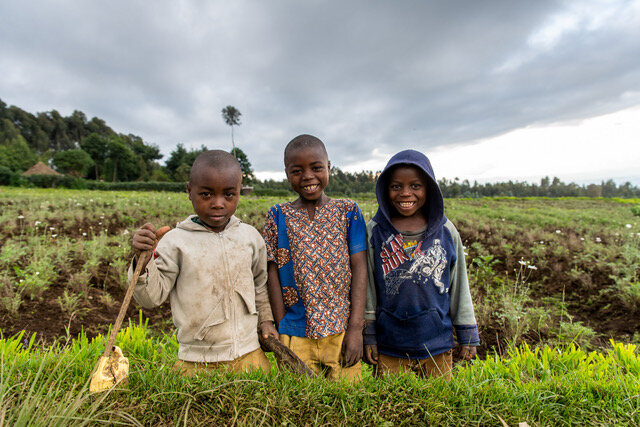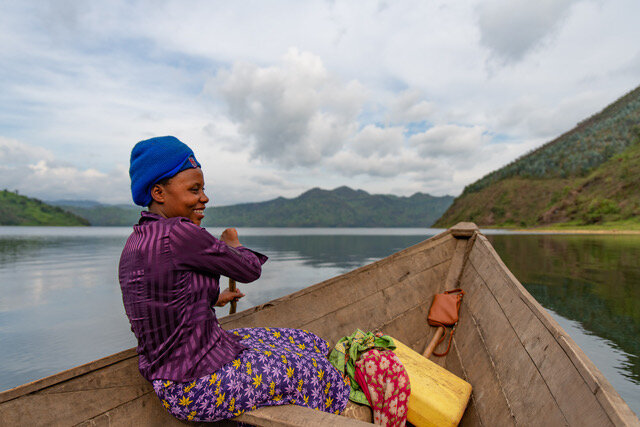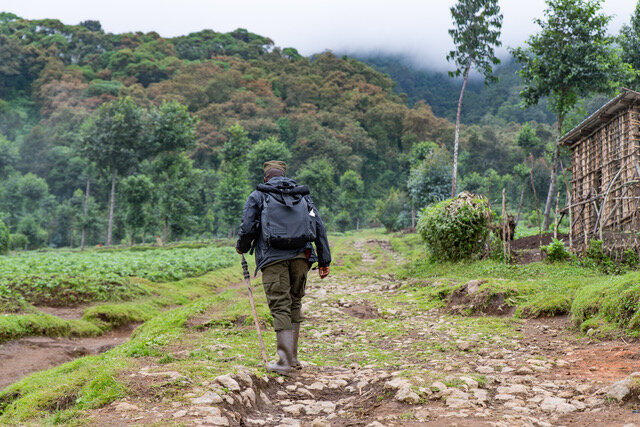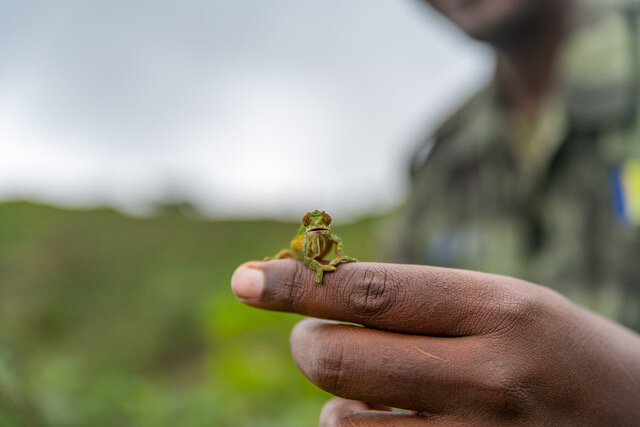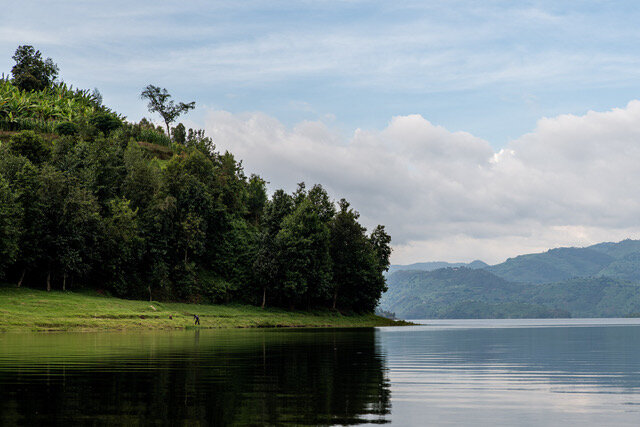Exploring Rwanda
For any travel, wildlife or photography enthusiast seeing a gorilla in the wild is surely an ultimate bucket list moment. It certainly was and is for me and in May 2019 my wish to photograph them became a reality.
Rwanda has one of the most fascinating yet torrid recent histories of any country in the world. During the four years between 1990-94 the horrific civil war between the countries two main tribes, the Hutu’s and the Tutsi’s, thousands of Rwandan refugees fled to camps on the edge of Volcanoes National Park. The resulting need for firewood led to great chunks of the park and mountain gorillas home range being lost. This war ended in 1994 after the horrific massacre of the Tutsi peoples led by extremist Hutu’s, that led to between 500,000 and 1,000,000 people losing their lives in just four months.
The subsequent 25 years have seen a dramatic turnaround in Rwandan culture, to the extent that it has now become one of the most prosperous and forward-thinking countries on the continent. This is evident when walking though Kigali, the country’s capital, particularly if you happen to do so on the final Saturday of a month, when you will find the entire nation cleaning the streets with straw brooms or picking up any discarded litter. This process, known as “Umuganda” is a country wide, three-hour street clean, showing how much the nation has managed to experience a change of conscience and embraced their shared heritage in a little over two decades.
The foothills of Volcanoes NP, once the site of camps of refugees, now peaceful homes
This positive change has had a great effect on tourism and, as a result, gorilla populations. Due to the demand to see gorillas in the wild and Rwanda’s now fantastic tourism infrastructure, they are able to command a park fee of $1,500 per person to trek with mountain gorillas for one hour. As a The foothills of Volcanoes NP, once the site of camps of refugees, now homes result, it is estimated that one gorilla is able to generate $2,500,000 worth of park fees and eco-tourism revenue in its lifetime: a great win not just for the gorilla populations, but also for the communities living in such close proximity to them.
While the primary focus for my time in Rwanda was to trek with gorillas, I was in the country for two weeks meaning I was able to see first hand the positive impact sustainable, well managed eco-tourism was having on the area. Sabyinyo Silverback Lodge (the Governors’ Camp Collection property in Rwanda) is in fact a community owned lodge run in partnership between Governors’, The African Wildlife Foundation (AWF) and the International Gorilla Conservation Program (IGCP).
The lodge is owned by a community trust, SACOLA (Sabyinyo Community Livelihood Association) set up specifically to receive rental and other income from the lodge ($100 per guest per night), and to use that income to drive socio-economic development and conservation initiatives in the Kinigi area; a region adjacent to the Volcanoes National Park in North-Western Rwanda to provide direct relief and revenue to families that live in such close proximity to gorillas. Just because these animals are a revelation for us to see as tourists, local people do not often feel the same. Just think about our attitude to foxes or badgers in the UK, or to wolves in America and Canada. One tourist’s bucket list is a local famers nightmare.
With all that in mind, it was such a treat to spend time exploring Kinigi, either from walks straight out of the lodge or driving in to local towns to visit fruit, fish and material markets. Having been able to do this in a number of African countries, Rwanda was without doubt the most vibrant. Not only due to its extremely green vegetation, it rains on average 300 days per year, but because the people are so open, friendly and willing to discuss the troubles their country had experienced a mere 25 years previously.
Making friends in Kinigi
Having spent so much time in Ethiopia working on my portraits collection, Rwanda was a great opportunity to expand on it. As documented, the process in Ethiopia had been tough, people were not as welcoming and infinitely more suspicious of me, whereas in Rwanda everyone I asked was delighted to be photographed. Often I was handed little slips of paper with email addresses on with requests to receive the images, something I was only too happy to do.
An equally interesting, but perhaps more arduous time was spent trekking to visit the site Dian Fossey had spent almost two decades studying and habituating gorillas between 1966-85. Her camp, Karisoke (named after an amalgamation from the names of two mountains it sits on) was, or so I was told, a 3-4 hour trek to reach due to the sensational amount of recent rainfall the area had experienced.
I reported to the park headquarters at 7am and was told that I was the only ‘tourist’ on the trek. I resent being called a tourist in a part of the world I spend so much time, especially when I am there working, but I suppose in retrospect that is what I am. My guide, Fidel, was the kind of man that was instantly likeable. Enormously tall, so that I at almost 6ft 3” looked quite steeply up at him, he had an equally large smile and even greater personality. His goal was not just to show me the site of the camp but as much of his home country as was possible along the way. Perhaps rather ominously we were also accompanied by two armed guards. Two men that kept their distance throughout, refused to be photographed and disappeared almost from start to finish of the trek. Very much a we can see you but you cannot see us a situation.
The reason for having them with us was perhaps out of over caution, but as the park straddles three countries (Rwanda, Uganda and the Democratic Republic of Congo) it is always better to be safer than sorry. I should add that it is a standard precaution taken by the park HQ and not by me, I was none the less happy to have them there.
The trek took me through stunning scenery but I confess to spending the entire time trying to persuade Fidel to take us on a secret gorilla finding mission. Having photographed them for the first time the day previously I was obsessed with seeing them again but each time I asked Fidel he gave me a smile and simply said, “maybe”. A second sighting never materialised, although this was to be expected. Had we come within range of where a family were that day it may have been different though.
Genuinely stunning scenery throughout my trek up to Karisoke
Despite the rain, thick mud and stopping to take regular images we reached Karisoke within a couple of hours, the quickest Fidel admitted to ever making it there. Hardly anything remains to recognise the area as a campsite. The buildings have been torn down to foundations and the forrest has grown over most of those in a way that reminds you just how quickly nature will rebound. Sign posts informed me what had been on each set of foundation stones but had they not been there I doubt I would ever have noticed a camp had stood there for 20 years.
The most notable and poignant area though was the graveyard. Here Dian had buried or had plaques commemorating her favourite gorillas, those she had got to know particularly well during her habituation process. Undoubtedly the most document friendship was between Dian and Digit, a young male whom when she first encountered instantly formed a bond with.
Tragically Digit and Dian shared not just this connection but also a fate. 10 years after their first meeting, by which time Digit would have been a fully grown silverback, he was tragically murdered by poachers. He was found with multiple stab wounds as well as a severed head and hands and is believed to have attempted to fight the poachers off to give his family time to escape. This was one of a number of events that caused Dian to declare an all out war against poachers until equally tragically she was found murdered in her hut on December 27th 1985. She was about to turn 54. Her grave, next to her beloved Digit, is a reminder of the sacrifices people like Dian make to protect some of the world’s most endangered species. How terrifying a thought it is that we must fight each other to protect something we all share.
I feel extremely privileged to have visited Karisoke. It is a humbling monument to a woman without whom we may not have the ability to visit the gorilla’s so readily today.
Dian Fossey’s final resting place, next to her beloved ‘Digit’
The People that make the adventure.
